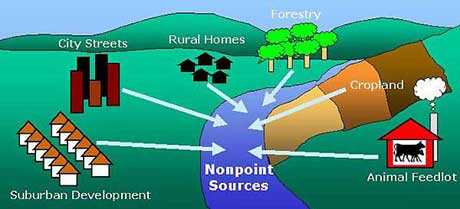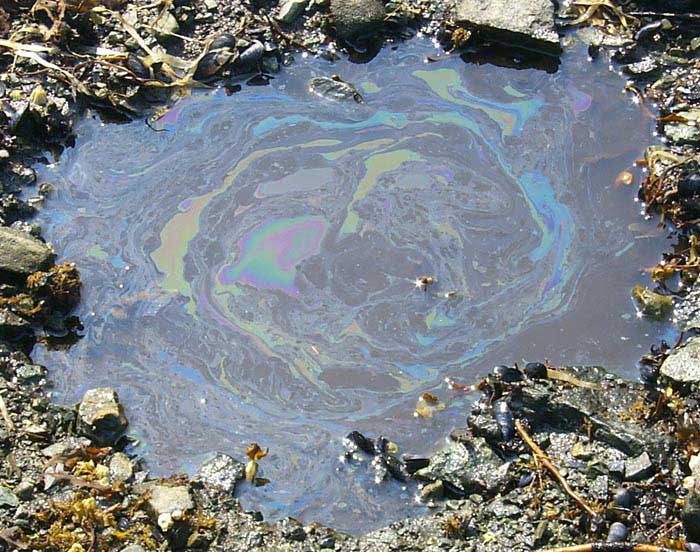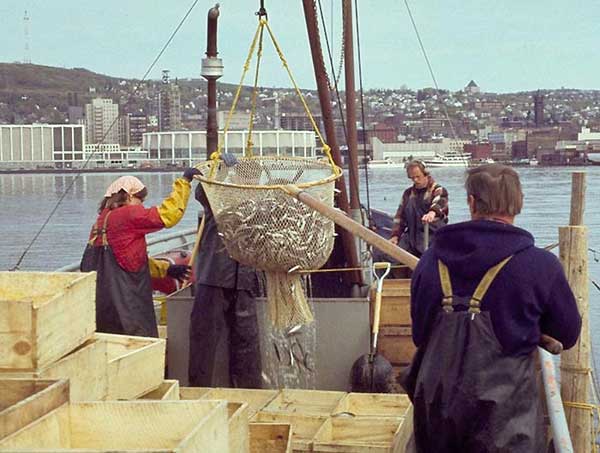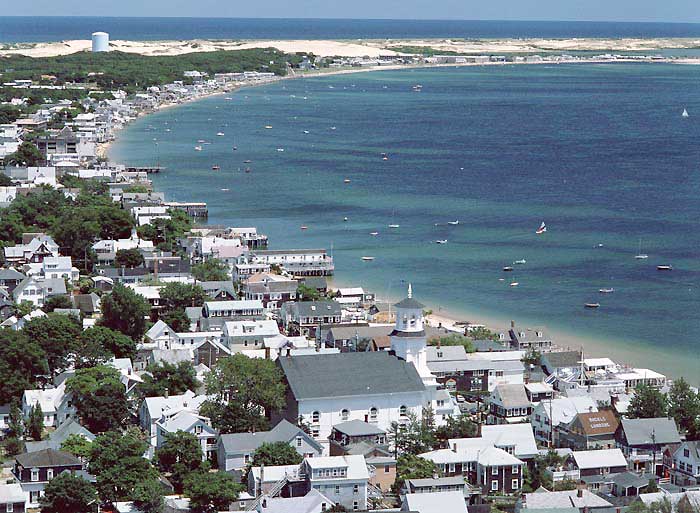Nonpoint Source
Pollution Tutorial

Nonpoint source pollution is difficult to control because it comes from many different sources and locations.
Most nonpoint source pollution occurs as a result of runoff. When rain or melted snow moves over and through the ground, the water absorbs and assimilates any pollutants it comes into contact with. Following a heavy rainstorm, for example, water will flow across a parking lot and pick up oil left by cars driving and parking on the asphalt. When you see a rainbow-colored sheen on water flowing across the surface of a road or parking lot, you are actually looking at nonpoint source pollution.

Motor oil and other oil-based chemicals can be recognized by a characteristic rainbow-colored sheen.
This runoff then runs over the edge of the parking lot, and most likely, it eventually empties into a stream. The water flows downstream into a larger stream, and then to a lake, river, or ocean. The pollutants in this runoff can be quite harmful, and their sources numerous. We usually can’t point to one discreet location of nonpoint source pollution like we can with a discharge pipe from a factory.
Nonpoint source pollution not only affects ecosystems; it can also have harmful effects on the economy. U.S. Coastal and marine waters support millions of jobs, generate billions in goods and services through activities like shipping, boating, and tourism, and contribute billions to the U.S. economy through recreational fishing alone. If pollution leads to mass die-offs of fish and dirty-looking water, deep financial losses often result.
Nonpoint source pollution affects the beauty and health of coastal lands and waters. If the physical and environmental well-being of these areas is diminished, people will naturally find it less appealing to visit the coast. Beaches will not provide the tranquility and leisure activities many people expect to experience. You can see how nonpoint source pollution plays an indirect, though powerful role in tourists' contributions to a coastal community's economic status.

Nonpoint source pollution can severely affect many aspects of a community especially the commercial fishing industry.
The population in many coastal communities is also increasing at a rapid rate, and the value of waterfront property often relies on environmental and aquatic conditions. Excess nonpoint source pollution impacts the overall quality of life, and subsequently can drive property values down. If nonpoint source pollution continues to plague the waters surrounding coastal communities, their economies and social conditions may rapidly deteriorate.
Although the concentration of some pollutants from runoff may be lower than the concentration from a point source, the total amount of a pollutant delivered from nonpoint sources may be higher because the pollutants come from many places.

High densities of population along coastal regions can place great stress upon the environment, particularly through the effects of nonpoint source pollution.
With increased control over point source pollution, scientists have begun to focus on nonpoint source pollution, how it affects the quality of the environment, and, even more importantly, how it can be controlled. Nonpoint source pollution is difficult to control because it comes from multiple locations. It also varies over time in terms of the flow and the types of pollutants it contains.
Pollution
Pollution Lessons
- Welcome
- A Brief History of Pollution
- Point Source
- Nonpoint Source
- Urban and Suburban Areas
- Agricultural Operations
- Atmospheric Inputs
- Forestry and Mining Operations
- Marinas and Boating Activities
- Nutrients
- Suspended Sediments
- Pesticides and Toxic Chemicals
- Bacteria, Viruses, and Trash
- Research, Monitoring, and Assessment
- Controlling Nonpoint Source Pollution
- What You Can Do
- References
- Roadmap to Resouces
- Subject Review (PDF)
Categories of Pollution
Pollutants from Nonpoint Sources
